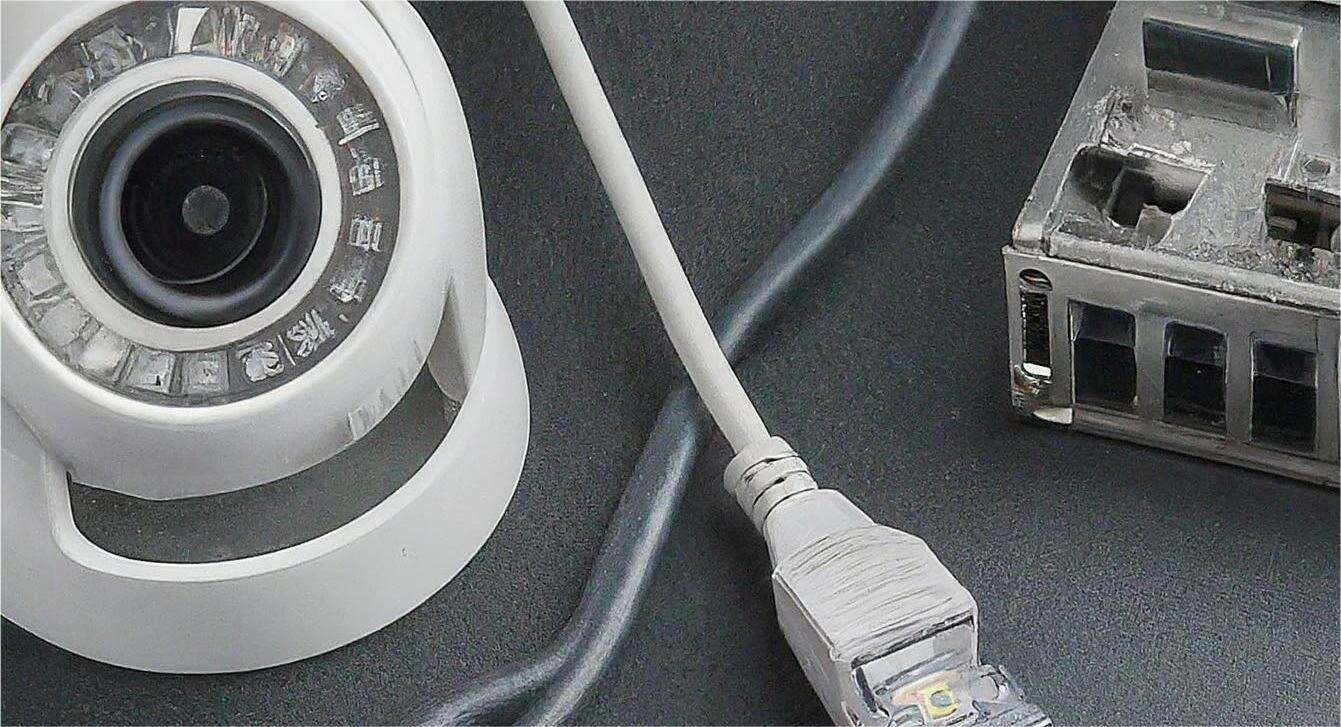A Comprehensive Guide to PoE Security Cameras for Beginners
What is PoE technology?
PoE, or Power over Ethernet, is a technology that transmits power and data over a single Ethernet cable. The creation of this technology has changed the way surveillance cameras are installed and simplified cabling requirements.PoE technology has different power levels according to different standards, and you need to choose the right power according to the actual usage requirements to meet the needs of more high-power devices. With the development of technology, PoE is also extended to higher power levels, such as 802.3bt (PoE++).
PoE Camera Basics
A PoE camera, is also known as a webcam. As the name suggests, it is a camera with integrated PoE technology that receives power and transmits video data over a single network cable. This design of camera greatly reduces the complexity of the installation process.
PoE cameras utilize built-in sensors to capture real-time images, which are encoded into a digital stream by a processor and then sent to an NVR for recording and storage. Users can view the video locally or remotely over the Internet at any time. The camera can also perform intelligent identification and send alerts. It supports uninterruptible power supply to protect data security. In short, PoE cameras simplify surveillance setup and improve efficiency.
Components of a PoE camera system
A complete PoE camera system usually has multiple parts:
- PoE Camera: the PoE camera is like the 'eye' in the whole system, which is used to capture images in real time and convert them into digital signals. It is capable of processing video information independently.
-
Network Video Recorder (NVR): The NVR is the 'brain' in the whole system, which receives data from PoE cameras and allows users to analyze and access it. It offers higher capacity and better data management than traditional DVRs.
-
Ethernet Cable: Used to connect PoE cameras to the NVR, transferring power and data, acting as a 'blood vessel'. CAT5e and CAT6 cables are commonly used in PoE systems due to their high speed and reliability.
- PoE Switch: Allows multiple PoE cameras to be connected to the same network and provides an additional connection point to extend the coverage of the system.

What are the advantages of using PoE technology cameras
1. Simplified wiring: eliminating the need for separate power cables, reducing wiring requirements and associated installation costs.
2. Enhanced flexibility: the location of the device installation is no longer limited by the location of the power outlet, improving the deployment flexibility of the device.
3. Easy to expand: When adding new devices, they only need to be connected to the existing network, and there is no need to consider additional power supply issues.
4. Remote management: Support remote power switching, easy to manage and maintain.
5. High reliability: using standard Ethernet cable, stable transmission and strong anti-interference ability.
Comparison between PoE camera and other surveillance systems
Analog camera system
Compared to PoE cameras, analog cameras use coaxial cables to transmit lower resolution analog signals, are more complex to install, have limited remote access, and lack smart features. While analog cameras may have a lower initial cost, PoE cameras are the preferred choice for modern surveillance systems due to their HD video quality, intelligence, and ease of maintenance, and are gradually replacing traditional analog cameras as technology evolves.
Wifi camera system
PoE cameras and WiFi cameras have their own advantages and are the two mainstream choices for modern surveillance systems.WiFi cameras are connected wirelessly, flexible in installation and easy to expand, suitable for places with difficult wiring, but they may be subject to signal interference and depend on the stability and security of the wireless network.
Cloud Camera System
Cloud cameras connect via the Internet and store video data on a remote server, offering the convenience of remote access and a lower initial cost, but are dependent on ongoing cloud service fees and a stable network connection. Cloud Camera is suitable for users looking for flexibility and simplified management.

 EN
EN
 AR
AR
 DA
DA
 NL
NL
 FI
FI
 FR
FR
 DE
DE
 EL
EL
 HI
HI
 IT
IT
 JA
JA
 KO
KO
 NO
NO
 PL
PL
 PT
PT
 RO
RO
 RU
RU
 ES
ES
 SV
SV
 TL
TL
 IW
IW
 ID
ID
 SR
SR
 VI
VI
 HU
HU
 TH
TH
 TR
TR
 FA
FA
 MS
MS
 IS
IS
 AZ
AZ
 UR
UR
 BN
BN
 HA
HA
 LO
LO
 MR
MR
 MN
MN
 PA
PA
 MY
MY
 SD
SD















